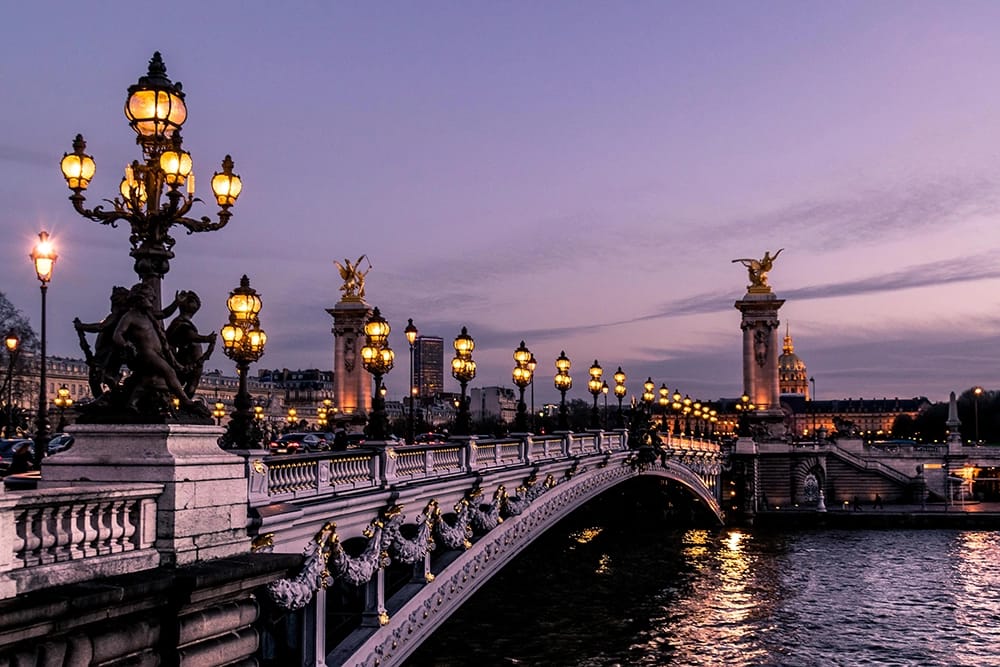
Composer George Gershwin
Much like Sting’s 1987 hit “An Englishmen in New York,” George Gershwin’s free form symphonic tone poem An American Paris finds its inspiration in the idea of being a fish out of water and the wide-eyed excitement of seeing new sights and hearing new sounds. Gershwin traveled to Paris in 1926 to study with Maurice Ravel. Ravel refused to teach him after their first meeting, saying that George would be better as a first-rate Gershwin rather than a second-rate Ravel.

George Gershwin (on the far right) with Maurice Ravel at the piano
Gershwin began his sketches that year for what would become An American in Paris with a shorter piece entitled “Very Parisienne.” When returning to the U.S., Gershwin brought home Parisian car horns in specific pitches which figured prominently in that work and of course later in the final version of An American in Paris.
The piece begins like it’s in the middle of a thought, in stark contrast to the dramatic opening to Gershwin’s 1924 masterwork Rhapsody in Blue. You can picture someone, perhaps Gershwin himself, strolling the streets of Paris after just arriving in the city and taking in the hustle and bustle of daily life. Trucks rushing by and honking at oncoming traffic, businessmen rushing off to the office, a woman picking flowers and bread for the evening meal from a street vendor in a city street market. The mood transitions to feelings of homesickness, which are quickly dashed by a visit to a cabaret and the nightlife of Paris in the 1920s. Bright lights, roaring fountains, and romantic encounters.
An American Paris premiered in 1928 and was met with some resistance by classical critics, who felt the work was too light and contemporary to share a bill with Mozart and Bach. Gershwin responded, saying “It’s not a Beethoven symphony . . . it’s a humorous piece, nothing solemn about it. It’s not intended to draw tears. If it pleases symphony audiences as a light, jolly piece, a series of impressions musically expressed, it succeeds.”
An American in Paris has gone on to be one of Gershwin’s most popular and oft-performed works. It will also live on forever on the silver screen as part of the 1951 Oscar-winning film starring Gene Kelly and Leslie Caron which shares the same title.







